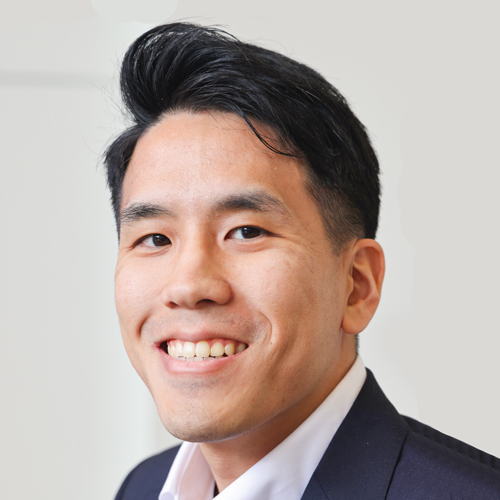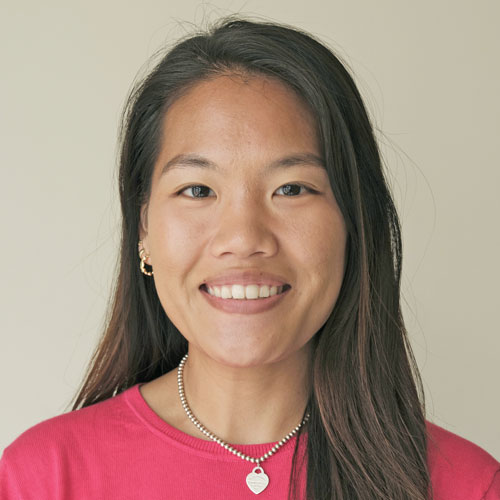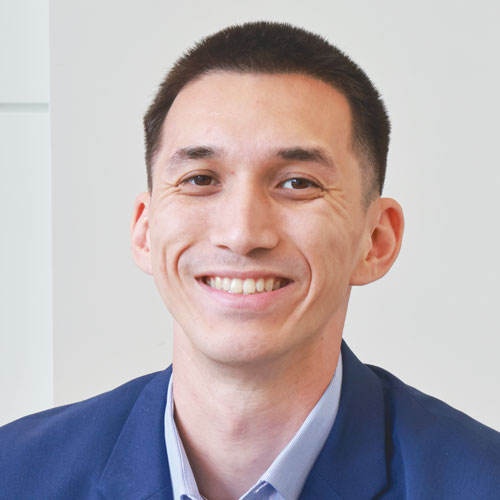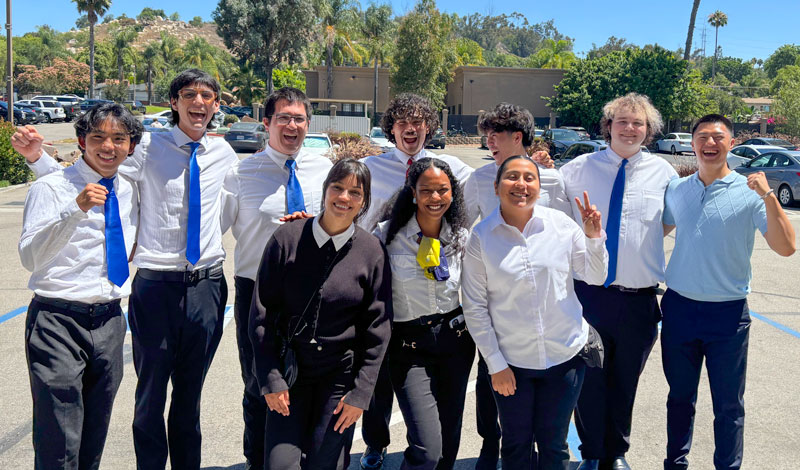The Sustaining Contribution program provides steady financial support to the SGI-USA and enables participants to financially protect and expand our kosen-rufu movement far into the future. The SGI-USA youth leaders discuss how they began participating in Sustaining Contribution and why they feel it’s important.
Living Buddhism: Hello! Thank you for talking to us about Sustaining Contribution! How did you decide to start?

Shota Okajima: I became a sustaining contributor in 2017, the year I became active in my Buddhist practice. I was earning my master’s degree while working part time and living at home. Toward the end of that year, my district men’s leader encouraged me to sign up for Sustaining Contribution. He didn’t say anything in particular, but rather his life was an example of how his contributions to kosen-rufu, financially and otherwise, had helped him build fortune. Even though I started off small, the important thing is that I decided to take that first step. I can see clearly now how making such causes have manifested in my life and career.

Apoorvee Sawhney:I also became a sustaining contributor around 2016 or 2017. I remember a men’s division member sharing that when we make financial contributions to the SGI, our contributions are advancing kosen-rufu even in places we may never see. I like that my contributions are helping bring hope to those who are encountering Buddhism through Buddhability, for example.
Kenichi Hackman: I’d heard of Sustaining Contribution, but I didn’t know what it was or what it meant. In 2018, my young men’s leader said that it costs money to run our centers—our castles of kosen-rufu. After that visit, I remember chanting and thinking about all the good things that happened in our centers to me personally—all the ways in which I was encouraged. I concluded that signing up would be my personal way to take action for my own center and give back to my SGI community.
What are some of the things you have transformed through starting Sustaining Contribution?

Grady Tesch: With money, there is always fear. So, contribution for me has been about overcoming my lesser self. Most people are afraid to give either their time or money because they feel they have a finite amount of both. But Buddhism teaches that when you give these things to help others, you gain more in return. That’s cause and effect. By confronting my fears, I’ve become someone who can take action with courage.

Minami Okajima: I feel the same. Through making financial contributions, I have broken through my attachment to money. It enables me to give to something greater than myself, and it’s a cause I make to break through deeper karma. Actually, whenever I’m struggling, I challenge myself to increase my Sustaining Contribution amount!
Shota: Contributing to the financial security of our kosen-rufu movement has helped me deepen my appreciation for the people who really fought to get us here and build the organization. The pioneer members of our movement really gave everything, their time, their money, their efforts to build the SGI-USA, and due to their efforts, we can practice here today.
Apoorvee: Absolutely. The crux of contribution is the heart of appreciation. What I have gratitude for is the community, for having centers, for having people who will fight for your life. When we have gratitude, we feel happy. And with this life condition, we gain many benefits!
It has also helped me become more secure as a person. I have become someone who can always generate hope. Some people ask why they should do Sustaining Contribution if they already do May Contribution. The way that I explain it is: May Contribution is like planting a new tree. It’s like a fresh beginning, a new departure, renewal. It inspires growth. Sustaining is like regularly watering and caring for that tree. We need both!
Thank you for sharing. Have you ever felt resistance to contributing?

Kenichi: A few years ago, I was dreading the 18th of every month—that’s when my sustaining gets pulled from my bank account. I was struggling a lot financially. But something really interesting happened as I was chanting, facing my own struggles. The dread turned into a feeling of pride and confidence—that I was making a cause for my life. Those causes have resulted in great benefit, and I’m in such a different place now.
Apoorvee: Just a couple years ago, I started feeling anxious whenever my Sustaining Contribution amount left my bank account. I was looking for a new job at the time and reassessing my finances. But I took that feeling to the Gohonzon. I learned to use prayer, and I deepened my conviction that my contribution was enabling people to transform their karma and become happy. By centering on faith, I saw so many breakthroughs, and as I was encouraged would happen, I soon no longer had to worry about finances. I got a great job at a private university, which brought me to Colorado.
What would you say to those who are on the fence about starting?
Minami: I was reflecting on when I first started Sustaining Contribution and participating now, and I realized whether you have money or not, the joy of contributing to something greater than yourself is the same. I want to encourage the youth, you won’t necessarily be happier just because you have more money. I work as a nurse saving people, and I feel so fulfilled in my job, but I also have great pride in being a part of Sustaining Contribution, helping countless people strive for their happiness and others. So, to the youth: Start now!
Grady: I encourage those who are on the fence to ask those who do it and see if any of them regret starting. Because I imagine most people you talk to wish they started sooner. If you find that you have faith like fire, or have a practice that feels transactional (I’ll make this cause to get this benefit or I’ll chant really hard when I’m going through something), I would encourage you to start Sustaining Contribution. You can build a “flowing water” type of faith, allowing you to steadily build your life condition and fortune so that your life is ready when obstacles arise!
What are your hopes for your peers?
Shota: I want them to become happy, build fortune and create the foundation for kosen-rufu for the coming generations. As we move ahead toward Sensei’s 100th birthday with the goal to establish a growing force of young people who will create a peaceful world through Buddhist humanism, I’ve been thinking about my personal life and the friendships I’m creating. In the next two years, I want to take my time in developing deep bonds of friendship and chanting for each person’s happiness. I hope all SGI-USA youth can do the same.
Apoorvee: I totally agree. How are we going to show Sensei how happy we have become? When I have this desire to help other people become happy at the center of my life, there is nothing I can’t transform. Shakubuku can turn poison into medicine. I’m going to transform poison into medicine toward 2028, and I hope everyone can use this opportunity to do the same.
Grady: Me too. Our desire to respond to Sensei with a youthful organization is forcing me to do my own human revolution. I’ve been reflecting on who I am as a person. This process of developing friendships with those in our community, it’s made my life more enjoyable. My wife, Amelia, and I just had a kid, and because of our efforts to make friends with our neighbors, so many people are supporting us by checking in and dropping off food, offering their support, now that the baby is here.
Minami: I’ve also been reflecting on my environment, and one question I asked myself was: Am I really chanting for my friends’ happiness? When I thought about it, I realized I don’t think I was chanting for them at all. Prior to this year, I had a different idea of what shakubuku was. I would choose someone I wanted to share Buddhism with, write their name on an altar card and chant. But now, I have the names of all of my friends, whether I’m actively trying to shakubuku them or not, and it has changed how I hold my friendships. Sharing Buddhism has become more joyful because it is no longer just about when they are going to attend their next meeting but based on deep friendship and trust.
Kenichi: Every day I’m chanting about how best to represent Sensei and the SGI in my community. As I’ve been chanting this way, I’ve realized that everyone can be a friend. The people in our communities, our neighbors, we definitely share karma with them. They are all “homies in the making.” I want to show actual proof and become a pillar in my community. Through friendship-based shakubuku and making causes, such as participating in Sustaining Contribution, we are widening the path of kosen-rufu.
You are reading {{ meterCount }} of {{ meterMax }} free premium articles

